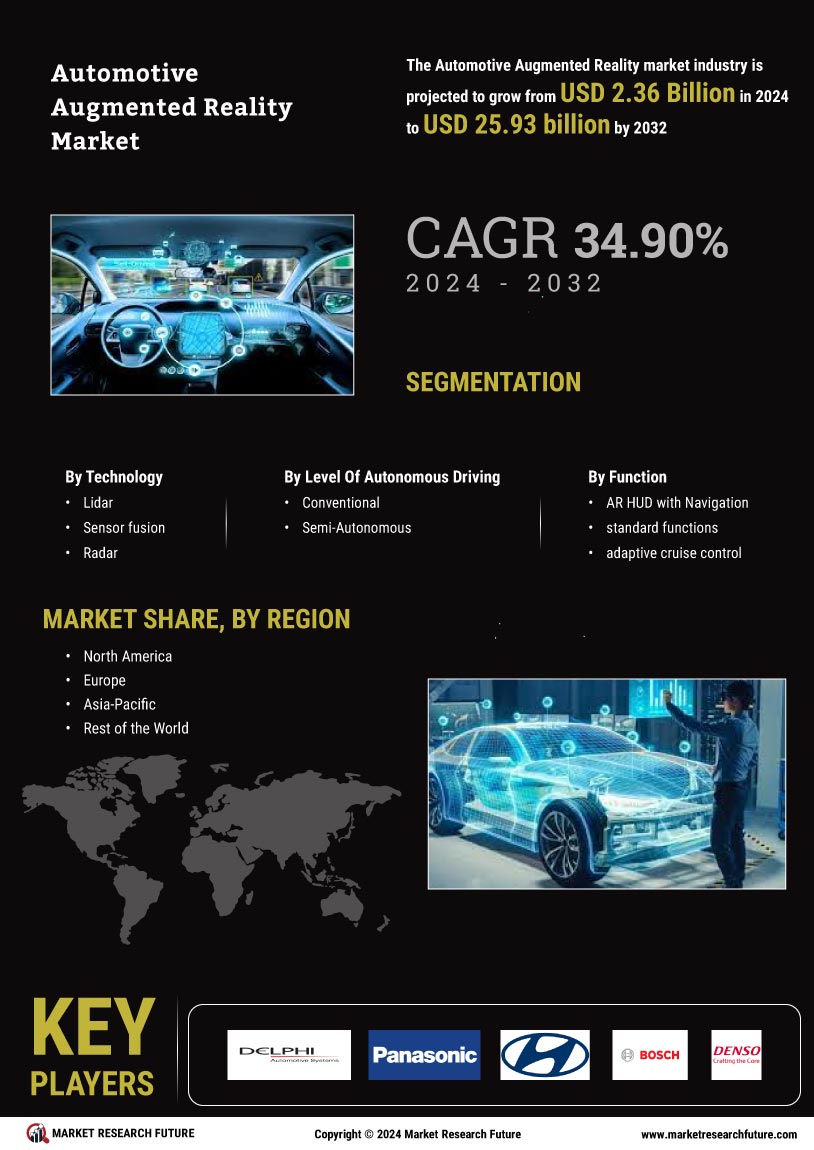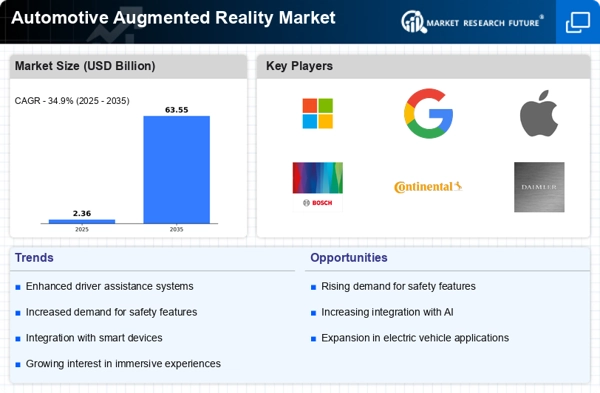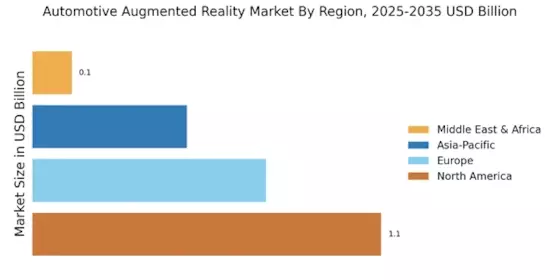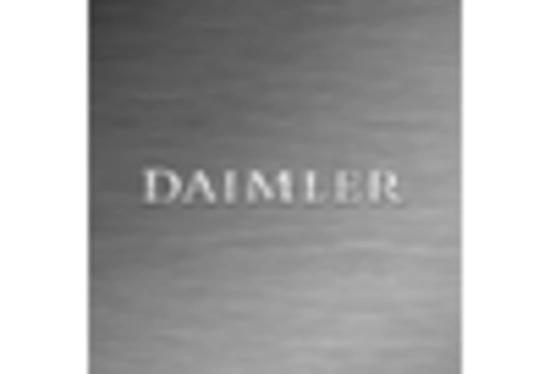Enhanced Safety Features
The Automotive Augmented Reality Market is experiencing a surge in demand for enhanced safety features. As vehicle manufacturers increasingly integrate augmented reality (AR) into their designs, the focus on driver and passenger safety intensifies. AR technology facilitates real-time hazard detection and alerts, significantly reducing the likelihood of accidents. According to recent data, the incorporation of AR in safety systems could potentially decrease collision rates by up to 30%. This trend is driven by consumer expectations for advanced safety measures, as well as regulatory pressures for improved vehicle safety standards. Consequently, the Automotive Augmented Reality Market is poised for substantial growth as manufacturers prioritize these innovative safety solutions.
Increased Demand for Smart Vehicles
The Automotive Augmented Reality Market is witnessing a notable increase in demand for smart vehicles equipped with advanced technologies. Consumers are increasingly seeking vehicles that offer connectivity, automation, and enhanced user experiences. AR applications, such as heads-up displays and interactive dashboards, are becoming essential features in modern vehicles. Market data indicates that the smart vehicle segment is projected to grow at a compound annual growth rate of over 20% in the coming years. This shift towards smart vehicles is not only driven by consumer preferences but also by the automotive industry's commitment to innovation and sustainability. As a result, the Automotive Augmented Reality Market is likely to expand significantly in response to this growing demand.
Technological Advancements in AR Hardware
The Automotive Augmented Reality Market is significantly influenced by technological advancements in AR hardware. Innovations in display technologies, sensors, and processing power are enabling the development of more sophisticated AR systems. These advancements allow for improved accuracy, responsiveness, and user experience in AR applications. Market data suggests that the AR hardware segment is projected to experience robust growth, driven by the increasing adoption of AR in vehicles. As manufacturers invest in cutting-edge technologies, the Automotive Augmented Reality Market is likely to see a surge in new product offerings that leverage these advancements, ultimately enhancing the overall driving experience.
Integration with Autonomous Driving Technologies
The Automotive Augmented Reality Market is closely linked to the advancements in autonomous driving technologies. As the automotive sector moves towards fully autonomous vehicles, the integration of AR systems becomes increasingly vital. AR can enhance the user experience by providing real-time information about the vehicle's surroundings, navigation, and potential hazards. This integration is expected to improve the overall safety and efficiency of autonomous driving systems. Market forecasts suggest that the autonomous vehicle segment will account for a substantial share of the Automotive Augmented Reality Market, with AR playing a crucial role in facilitating seamless interaction between the vehicle and its environment. The potential for AR to enhance the functionality of autonomous vehicles is a key driver of market growth.
Rising Interest in Augmented Reality Applications
The Automotive Augmented Reality Market is benefiting from a rising interest in AR applications across various sectors. As technology evolves, consumers and manufacturers alike are recognizing the potential of AR to transform the driving experience. Applications such as real-time navigation overlays, maintenance alerts, and entertainment options are gaining traction. Market analysis indicates that the AR application segment is expected to grow significantly, driven by advancements in smartphone technology and increased consumer engagement. This growing interest in AR applications is likely to propel the Automotive Augmented Reality Market forward, as manufacturers seek to differentiate their offerings and enhance customer satisfaction through innovative features.


















Leave a Comment